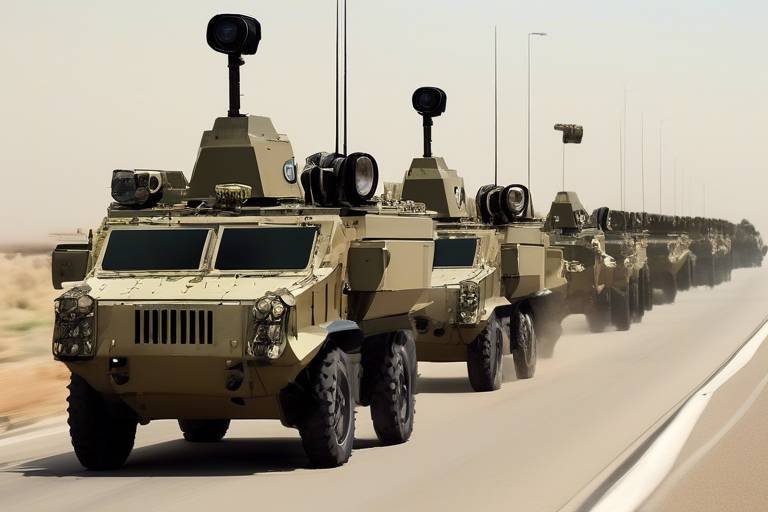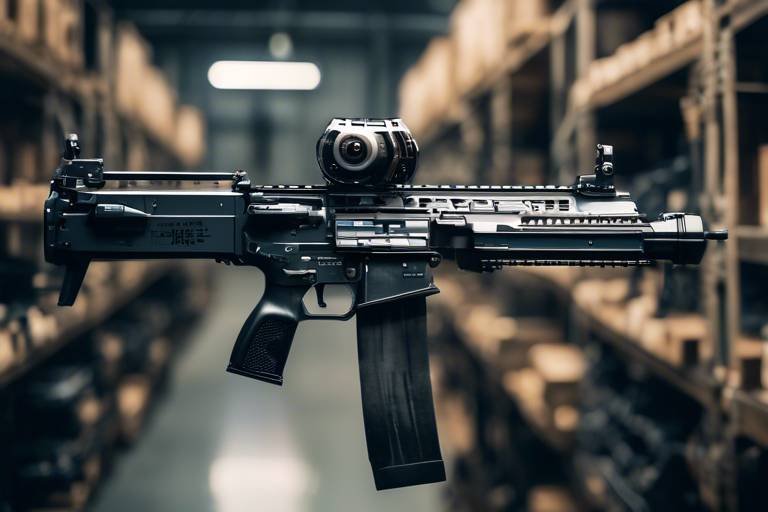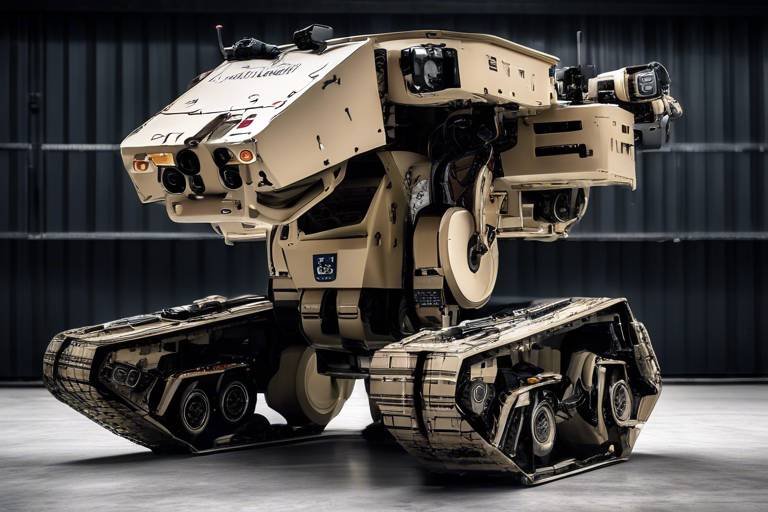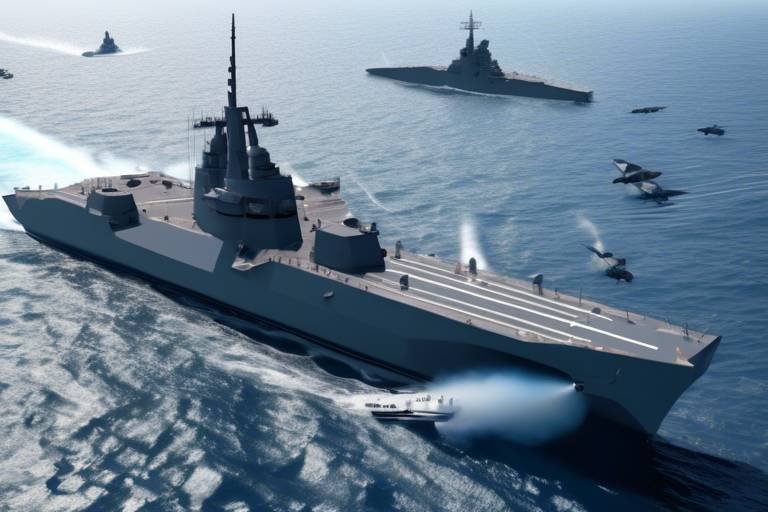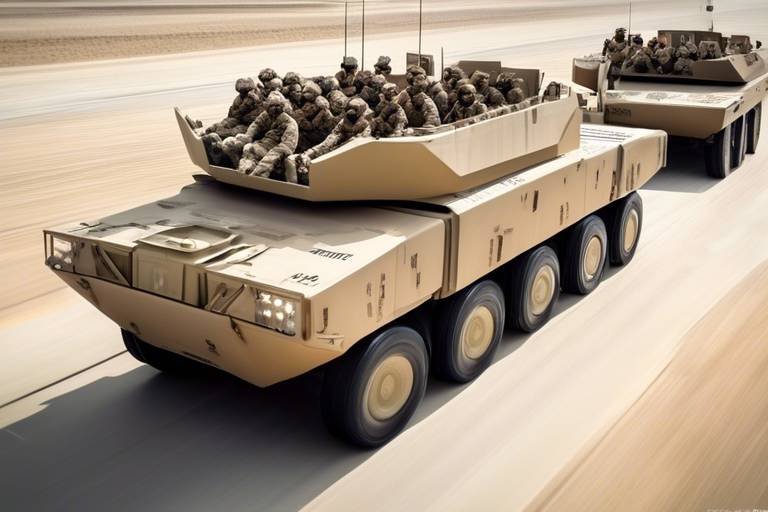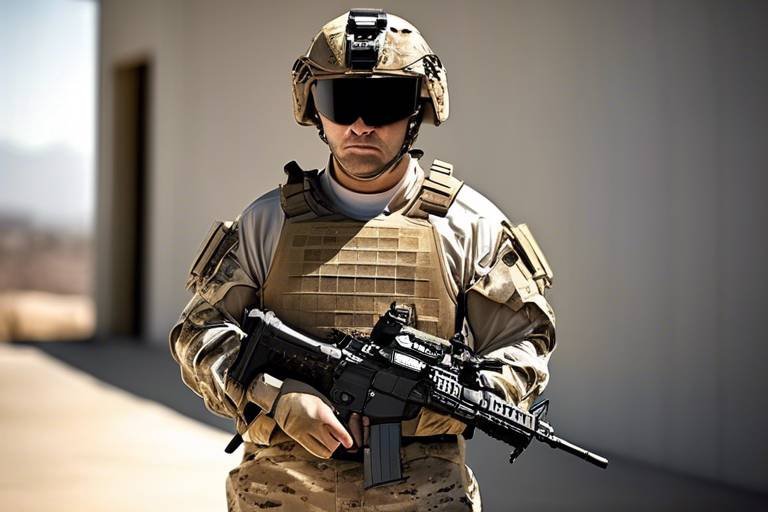Exploring the Future of AI in Military Operations
The landscape of military operations is undergoing a dramatic transformation, largely driven by the integration of artificial intelligence (AI). This technological revolution is reshaping how armed forces strategize, execute missions, and engage in warfare. Imagine a battlefield where decisions are made in real-time, based on vast amounts of data analyzed in the blink of an eye. The ability to harness AI not only enhances military efficiency but also introduces a host of new challenges and ethical dilemmas that must be navigated carefully.
As we delve into the future of AI in military operations, it’s essential to recognize that we are standing on the brink of a new era. The potential benefits of AI are staggering, offering improved situational awareness, faster decision-making, and optimized resource allocation. However, with these advancements come significant challenges, particularly concerning the implications of autonomous systems and the ethical considerations of their use. The military's reliance on AI raises critical questions about accountability and control over autonomous weapons, which could redefine the dynamics of warfare and international relations.
In this article, we will explore the multifaceted role of AI in military operations, focusing on areas such as combat strategy, autonomous weapons systems, intelligence gathering, and cyber warfare. We will also address the challenges that accompany these advancements, including the need for international regulations and the ethical considerations that must guide the development and deployment of AI technologies in military contexts.
Ultimately, the future of AI in military operations is not just about technology; it's about how we choose to wield it. As we navigate this complex landscape, it is crucial to engage in thoughtful discussions about the implications of AI on warfare, human lives, and global security. The stakes are high, and the decisions we make today will shape the future of military engagement for generations to come.
- What is the primary advantage of AI in military operations?
AI enhances decision-making speed and accuracy, allowing for more effective combat strategies and resource management. - Are autonomous weapons systems safe?
While they can reduce human casualties, there are significant ethical and accountability concerns regarding their use in warfare. - How does AI improve intelligence gathering?
AI enables faster analysis of large datasets, improving threat detection and predictive capabilities. - What are the risks associated with AI in cyber warfare?
AI can increase vulnerability to cyber attacks and escalate conflicts if not managed responsibly.
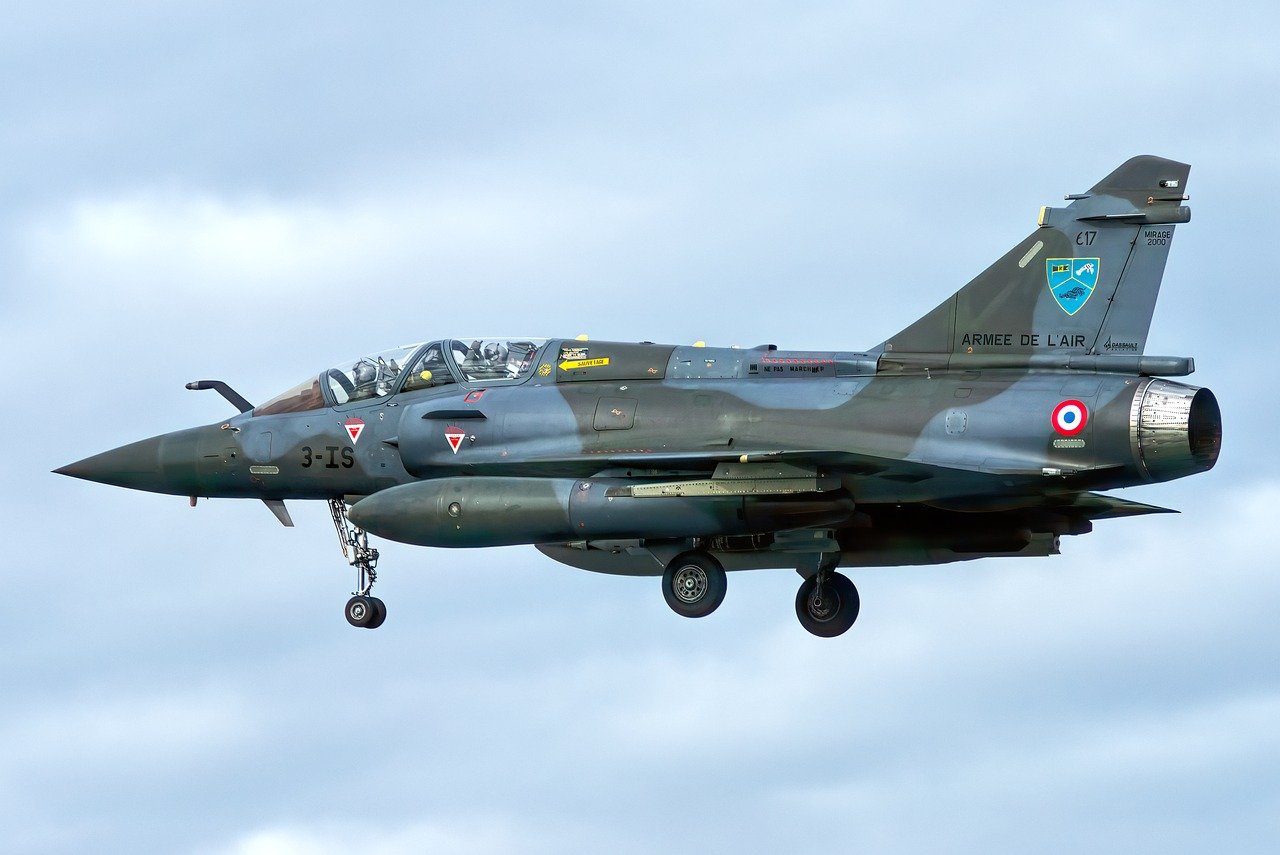
The Role of AI in Combat Strategy
Artificial Intelligence (AI) is not just a buzzword; it's a game changer in military combat strategy. Imagine a battlefield where decisions are made at lightning speed, where data-driven insights replace gut feelings, and where soldiers are equipped with the most advanced tools to enhance their effectiveness. This is the reality that AI is ushering in. By leveraging vast amounts of data, AI enables military leaders to make informed decisions that can turn the tide of battle. It enhances situational awareness, allowing commanders to see the battlefield as a dynamic environment, constantly updated with real-time information.
One of the most significant benefits of AI in combat strategy is its ability to optimize resource allocation. Think of it like a chess game where every piece on the board needs to be moved strategically to outsmart the opponent. AI analyzes various factors, including troop movements, supply lines, and even weather conditions, to determine the best course of action. This not only increases operational efficiency but also maximizes the effectiveness of military resources.
Moreover, AI's predictive capabilities allow military strategists to anticipate enemy movements and potential threats. By analyzing historical data and current trends, AI can forecast possible scenarios and recommend preemptive actions. This proactive approach is akin to having a crystal ball that provides insights into the future, enabling the military to stay one step ahead of adversaries.
However, the integration of AI into combat strategy isn't without its challenges. The complexity of data and the need for robust cybersecurity measures are critical considerations. As military operations become increasingly reliant on AI, the potential for cyber threats grows. Thus, ensuring the integrity and security of AI systems is paramount. In this context, training military personnel to understand and effectively utilize AI tools becomes essential.
In summary, AI is revolutionizing combat strategy in several ways:
- Data-Driven Decision Making: AI enables commanders to make choices based on comprehensive data analysis.
- Enhanced Situational Awareness: Real-time updates improve understanding of the battlefield dynamics.
- Optimized Resource Allocation: AI helps in deploying resources more effectively.
- Predictive Capabilities: Anticipating enemy actions can lead to a strategic advantage.
As we look to the future, it's clear that AI will continue to shape military operations. The fusion of technology and strategy is not just an evolution; it’s a revolution that promises to redefine how wars are fought and won. But with great power comes great responsibility. The ethical implications of using AI in combat, including accountability and control, must be carefully considered to ensure that the technology serves humanity rather than undermines it.
- How does AI improve decision-making in combat? AI analyzes vast data sets to provide insights that help military leaders make informed decisions quickly.
- What are the risks associated with AI in military operations? Risks include cyber vulnerabilities, ethical dilemmas, and the potential for misuse of autonomous systems.
- Can AI fully replace human decision-making in combat? While AI can enhance decision-making, human judgment remains crucial, especially in complex and unpredictable environments.
- What role does training play in implementing AI in the military? Training is essential to ensure that military personnel can effectively use AI tools and understand their implications.

Autonomous Weapons Systems
The development of marks a significant turning point in the landscape of modern warfare. These systems, capable of selecting and engaging targets without human intervention, are not just technological marvels; they are reshaping the very nature of combat. Imagine a battlefield where decisions are made in microseconds, where algorithms dictate strategies, and where human soldiers are supported—or even replaced—by machines. Sounds like science fiction, right? Yet, this is fast becoming a reality.
While the allure of increased efficiency and reduced human casualties is undeniable, the rise of autonomous weapons brings with it a host of complex challenges. The most pressing concern is the question of control. Who is responsible when an autonomous drone mistakenly targets civilians instead of enemy combatants? The potential for accountability issues looms large, as it becomes increasingly difficult to assign blame for actions taken by machines operating independently.
Moreover, ethical considerations are paramount. The very essence of warfare has traditionally involved human judgment and moral reasoning. With machines making life-and-death decisions, we must ask ourselves: Can a machine truly understand the implications of its actions? This question forces us to confront the fundamental nature of warfare and our own humanity.
To better understand the implications of these systems, let’s break down some of the advantages and challenges associated with their implementation:
| Advantages | Challenges |
|---|---|
| Reduced human casualties in high-risk environments | Complex ethical dilemmas regarding accountability |
| Increased operational efficiency and precision | Technical challenges in ensuring reliability and safety |
| Ability to perform complex missions in real-time | Potential for escalation of conflicts due to autonomous decision-making |
Despite the potential benefits, the implementation of autonomous systems is fraught with difficulties. Technical challenges abound—how do we ensure that these systems can operate reliably in unpredictable environments? Furthermore, the legal landscape is murky. Current laws of war were not designed with autonomous weapons in mind, leading to a significant gap in regulation.
As the international community grapples with these issues, discussions around regulations and treaties governing the use of autonomous weapons are becoming increasingly urgent. Countries must collaborate to establish guidelines that prevent misuse and ensure compliance with humanitarian laws. The stakes are high, and the potential for misuse or accidental engagement in conflict raises alarms that cannot be ignored.
In conclusion, while autonomous weapons systems hold the promise of transforming military operations, they also pose profound ethical, legal, and strategic challenges. As we stand on the brink of this new era in warfare, it is imperative that we engage in thoughtful discussions about the implications of these technologies. The future of military engagement may depend on our ability to navigate these complex waters responsibly.
- What are autonomous weapons systems? Autonomous weapons systems are military technologies that can select and engage targets without human intervention.
- What are the ethical concerns associated with these systems? Ethical concerns include accountability for mistakes, the potential for escalation in conflicts, and the question of whether machines can make moral decisions.
- How do autonomous systems reduce human casualties? These systems can operate in high-risk environments, allowing human soldiers to remain safe while still achieving military objectives.
- What challenges do we face in regulating autonomous weapons? Challenges include developing new legal frameworks, ensuring reliability, and addressing ethical dilemmas surrounding machine decision-making.
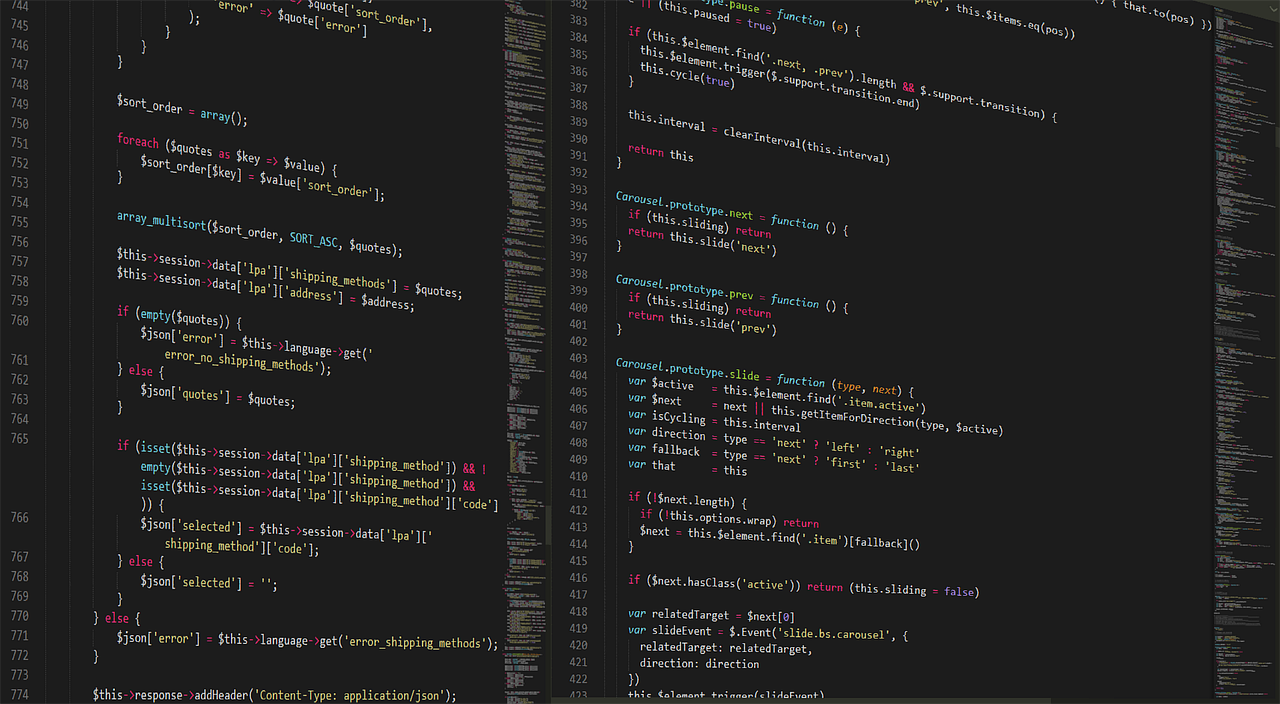
Advantages of Autonomous Systems
Autonomous systems are rapidly emerging as pivotal players in modern military operations, and their advantages are nothing short of revolutionary. By utilizing advanced algorithms and machine learning, these systems can operate in high-risk environments where human presence might be perilous. Imagine a battlefield where drones can scout enemy positions without putting soldiers at risk—this is not science fiction, but a reality that autonomous systems bring to life.
One of the most significant benefits of these systems is their ability to execute complex missions with remarkable precision. For instance, autonomous drones can conduct surveillance, gather intelligence, and even engage targets with minimal human intervention. This level of operational effectiveness not only enhances mission success rates but also reduces the likelihood of collateral damage, which is a critical consideration in modern warfare.
Moreover, the efficiency of autonomous systems allows military forces to optimize resource allocation. Instead of deploying large numbers of troops to secure an area, a smaller team can manage a fleet of drones or robots, significantly cutting down on manpower and logistical needs. This shift can lead to cost savings and allows human resources to be redirected to more strategic roles, enabling a more agile military response.
To illustrate the advantages, consider the following table that highlights key benefits of autonomous systems:
| Advantages | Description |
|---|---|
| Reduced Human Casualties | Operates in dangerous environments, keeping personnel safe. |
| Precision Operations | Executes missions with high accuracy, minimizing collateral damage. |
| Resource Optimization | Allows for the effective use of limited military resources. |
| Data Processing | Can analyze vast amounts of data quickly, enhancing decision-making. |
In addition to these advantages, the integration of autonomous systems into military operations can lead to improved data processing capabilities. These systems can analyze vast amounts of information much faster than human operators, making it easier to identify threats and make informed decisions on the battlefield. This ability to process and interpret data in real-time can be a game-changer, providing military leaders with the insights they need to adapt swiftly to changing conditions.
However, while the advantages of autonomous systems are compelling, it’s essential to approach their implementation with caution. The potential for misuse and the ethical implications of deploying such technologies in warfare cannot be overlooked. As we embrace the future of military operations, a balanced discussion about the benefits and responsibilities of using autonomous systems is crucial.
- What are autonomous systems in military operations?
Autonomous systems refer to technologies that can perform tasks without human intervention, such as drones and robotic vehicles. - How do autonomous systems reduce human casualties?
By taking on dangerous missions, autonomous systems can keep soldiers out of harm's way, allowing them to perform tasks remotely. - What ethical concerns are associated with autonomous weapons?
There are significant concerns about accountability, control, and the potential for misuse in warfare scenarios. - Can autonomous systems make decisions on their own?
While they can analyze data and execute tasks, the decision-making process often still involves human oversight.

Challenges of Implementation
Implementing autonomous weapons systems in military operations is not just about developing cutting-edge technology; it involves navigating a complex web of technical, ethical, and legal challenges. As we stand on the brink of a new era in warfare, these challenges could significantly impact how these systems are integrated into existing military frameworks. One of the most pressing issues is the technical complexity of creating reliable autonomous systems that can operate in unpredictable environments. Unlike traditional weapons, autonomous systems must be capable of making real-time decisions based on a multitude of variables, which requires advanced algorithms and robust sensor technologies.
Furthermore, the question of accountability looms large. If an autonomous weapon were to malfunction or cause unintended harm, who would be held responsible? The manufacturer, the military personnel who deployed it, or the AI itself? This ambiguity raises serious concerns about legal liability and the potential for war crimes. The lack of clear guidelines on accountability can deter military leaders from fully embracing these technologies, fearing the repercussions of a misstep.
Moreover, there are significant ethical considerations that must be addressed. The idea of machines making life-and-death decisions is unsettling for many. The moral implications of removing human judgment from the battlefield cannot be overstated. Will we be comfortable with a robot deciding who lives and who dies? This concern is compounded by the potential for escalation of conflicts, as autonomous systems may operate faster than human decision-making processes, leading to unintended engagements.
Additionally, the integration of these systems into existing military operations poses logistical challenges. Military forces are traditionally structured around human decision-making, and shifting to a model that incorporates autonomous systems requires a complete overhaul of training, command structures, and operational protocols. This transition demands not only technological investment but also a cultural shift within military organizations that may be resistant to change.
Lastly, the international landscape complicates matters further. Different nations have varied stances on the development and use of autonomous weapons, leading to a patchwork of regulations and treaties. The absence of a unified international framework could result in an arms race in autonomous weaponry, where nations rush to develop advanced systems without adequate consideration for ethical and humanitarian implications. To illustrate these challenges, consider the following table:
| Challenge | Description |
|---|---|
| Technical Complexity | Developing reliable autonomous systems that can function in unpredictable environments. |
| Accountability | Determining who is responsible for the actions of autonomous weapons. |
| Ethical Considerations | The morality of machines making life-and-death decisions. |
| Integration | Logistical challenges in incorporating autonomous systems into existing military operations. |
| International Regulations | The need for a unified framework to govern the use of autonomous weapons globally. |
In conclusion, while the potential benefits of autonomous weapons systems in military operations are substantial, the challenges of implementation cannot be overlooked. Addressing these issues requires a collaborative effort among military leaders, technologists, ethicists, and policymakers to ensure that the deployment of these systems is responsible and aligned with international humanitarian laws.
- What are autonomous weapons systems?
Autonomous weapons systems are military technologies that can operate and make decisions without human intervention. - What are the ethical concerns surrounding autonomous weapons?
The primary ethical concerns include accountability for decisions made by machines and the morality of removing human judgment from warfare. - How do autonomous systems impact military strategy?
They enable data-driven decision-making, enhance situational awareness, and optimize resource allocation, which can lead to more effective military operations. - Are there international regulations for autonomous weapons?
Currently, there is no unified international framework, leading to varied regulations and potential for an arms race.

International Regulations and Treaties
The rapid advancement of artificial intelligence (AI) in military applications has sparked a global discourse on the need for international regulations and treaties. As nations increasingly integrate AI into their defense strategies, the question arises: how can we ensure that these technologies are used responsibly and ethically? The potential for autonomous weapons systems to operate independently raises significant concerns regarding accountability and control. In a world where machines can make life-and-death decisions, the absence of a regulatory framework could lead to catastrophic consequences.
Various international bodies, including the United Nations, are actively discussing frameworks to govern the use of AI in warfare. These discussions often revolve around the principles of human oversight, accountability, and compliance with existing humanitarian laws. The challenge lies in creating regulations that not only address the current landscape but also anticipate future developments in AI technology. For instance, how do we define the thresholds for autonomous decision-making in combat scenarios? What safeguards can be put in place to prevent misuse or unintended escalation of conflicts?
Moreover, countries are at different stages of AI development and military integration, making it difficult to establish a universally accepted set of rules. Some nations may prioritize rapid advancements in AI for strategic advantages, while others advocate for caution and ethical considerations. This disparity can lead to tensions and potential arms races, as nations scramble to outpace one another in AI capabilities.
To facilitate meaningful dialogue, it is essential to include a diverse range of stakeholders in the conversation. This includes not only military and government representatives but also academics, industry leaders, and human rights organizations. Engaging a broad spectrum of voices can help ensure that regulations are comprehensive and consider the ethical implications of AI in warfare.
As discussions progress, several key areas have emerged that require attention:
- Accountability: Who is responsible when an autonomous weapon system causes unintended harm?
- Transparency: How can we ensure that AI systems are operating within ethical guidelines?
- Compliance: What measures can be implemented to ensure that nations adhere to established treaties?
In conclusion, the establishment of international regulations and treaties governing the use of AI in military operations is not just a necessity; it's an urgent imperative. As we stand on the brink of a new era in warfare, the decisions made today will shape the future of global security and the ethical landscape of military engagement. The stakes are high, and the time for action is now.
Q1: What are autonomous weapons systems?
A1: Autonomous weapons systems are military technologies that can operate independently without human intervention, making decisions on targeting and engagement based on pre-programmed algorithms.
Q2: Why is there a need for international regulations on AI in military operations?
A2: International regulations are needed to ensure responsible and ethical use of AI technologies in warfare, preventing misuse and protecting human rights during military engagements.
Q3: What challenges do nations face in establishing these regulations?
A3: Challenges include differing national interests, technological disparities, and the rapid pace of AI development, making it difficult to create universally accepted guidelines.
Q4: How can stakeholders contribute to the regulatory discussions?
A4: Stakeholders can contribute by participating in dialogues, sharing research and insights, and advocating for ethical considerations in the development and deployment of military AI technologies.

AI in Intelligence Gathering
Artificial Intelligence (AI) is fundamentally transforming the landscape of intelligence gathering in military operations. Imagine having the capability to sift through mountains of data in mere seconds, identifying threats and opportunities that would otherwise remain hidden. This is not just a dream; it’s a reality that AI is making possible. By leveraging advanced algorithms and machine learning, military analysts can now analyze vast datasets—from satellite imagery to social media feeds—much faster and with greater accuracy than ever before.
One of the most significant advantages of AI in intelligence gathering is its ability to improve threat detection. Traditional methods often rely on human analysts who may overlook critical patterns due to the sheer volume of information. However, AI systems can recognize anomalies and trends that might escape human notice. For instance, AI can analyze communication patterns to detect potential terrorist activities or military movements, providing invaluable insights that can inform strategic decisions.
Moreover, AI enhances predictive capabilities. By analyzing historical data alongside real-time information, AI can forecast potential future scenarios. This predictive analysis allows military planners to prepare for various contingencies, ensuring that they are one step ahead of adversaries. For example, if AI identifies a sudden increase in troop movements in a specific region, military leaders can quickly assess the situation and respond appropriately, potentially averting conflict.
However, the integration of AI into intelligence operations is not without its challenges. One major concern is the potential for bias in data analysis. AI systems are only as good as the data they are trained on, and if that data is flawed or biased, the insights generated can be misleading. This is particularly critical in military contexts, where decisions based on inaccurate intelligence can have dire consequences. Therefore, continuous monitoring and updating of AI models are essential to ensure their reliability.
Another challenge lies in the ethical implications of using AI for intelligence gathering. Questions arise about privacy, surveillance, and the potential misuse of data. As military organizations increasingly rely on AI, they must balance the need for security with respect for individual rights and freedoms. This is a delicate dance that requires careful consideration and robust ethical guidelines.
In summary, AI is revolutionizing intelligence gathering by enabling faster analysis, improving threat detection, and enhancing predictive capabilities. Yet, as we embrace these advancements, we must remain vigilant about the ethical implications and potential biases that accompany them. As military operations become increasingly data-driven, the role of AI will undoubtedly continue to grow, shaping the future of warfare in profound ways.
- What is the primary role of AI in military intelligence gathering? AI enhances the speed and accuracy of data analysis, improving threat detection and predictive capabilities.
- Are there ethical concerns associated with AI in military operations? Yes, issues such as privacy, data bias, and potential misuse of information are significant ethical considerations.
- How does AI improve predictive capabilities in military intelligence? By analyzing historical and real-time data, AI can forecast potential future scenarios, allowing military planners to prepare for various contingencies.

Cyber Warfare and AI
The integration of artificial intelligence (AI) in cyber warfare is a double-edged sword, presenting a landscape filled with both opportunities and threats. On one hand, AI enhances military capabilities in offensive and defensive operations, allowing for faster, more accurate responses to cyber threats. Imagine AI as a vigilant sentry, tirelessly monitoring the digital battleground, ready to spring into action at the slightest hint of danger. On the other hand, this same technology can increase vulnerability, as adversaries also harness AI to develop sophisticated cyber attacks that could outpace traditional defenses.
One of the most significant advantages of AI in cyber warfare is its ability to analyze vast amounts of data at lightning speed. This capability allows military organizations to detect threats much earlier than human analysts could. For instance, AI algorithms can sift through terabytes of data from network traffic, social media, and other sources to identify patterns that indicate a potential cyber attack. This proactive approach can be likened to having a crystal ball that not only predicts the future but also helps in crafting strategies to mitigate risks before they materialize.
However, the integration of AI also poses substantial risks. The potential for escalation is a pressing concern. When AI systems are used to automate responses to cyber threats, there is a risk that these systems might act without adequate human oversight, leading to unintended consequences. Imagine a scenario where an AI misinterprets benign activity as a hostile action, triggering a counter-offensive that escalates into a larger conflict. This possibility raises ethical and strategic questions about the use of AI in military operations.
Moreover, the reliance on AI in cyber operations can create a false sense of security. While AI can significantly enhance defensive capabilities, it is not infallible. Cyber adversaries are continuously evolving their tactics, and as AI becomes more prevalent, the arms race in cyber warfare intensifies. Just as a well-trained soldier must stay sharp and adaptable, military organizations must ensure their AI systems are regularly updated and tested against emerging threats.
To illustrate the potential impact of AI on cyber warfare, consider the following table that outlines key benefits and risks:
| Benefits of AI in Cyber Warfare | Risks of AI in Cyber Warfare |
|---|---|
| Enhanced threat detection and response times | Potential for unintended escalation |
| Ability to analyze large data sets for patterns | Increased vulnerability to sophisticated attacks |
| Automation of routine security tasks | Dependence on technology that can fail or be exploited |
As military organizations navigate this complex landscape, it is crucial to strike a balance between leveraging AI for enhanced capabilities and ensuring robust ethical frameworks are in place. This includes establishing clear guidelines for AI use in cyber operations to prevent escalation and ensure accountability. The international community must engage in discussions to formulate regulations and treaties that govern the use of AI in warfare, addressing the potential for misuse and the need for compliance with humanitarian laws.
- What are the primary benefits of using AI in cyber warfare?
AI enhances threat detection, improves response times, and automates routine security tasks, making military operations more efficient. - What risks are associated with AI in cyber operations?
Risks include potential escalation of conflicts, increased vulnerability to sophisticated cyber attacks, and reliance on technology that may fail. - How can international regulations address the challenges of AI in warfare?
International regulations can help establish guidelines for responsible AI use, ensuring compliance with humanitarian laws and preventing misuse.

AI-Driven Cyber Defense
In today's digital battlefield, the integration of artificial intelligence (AI) into cyber defense strategies has become a game changer. Imagine having a vigilant guardian that never sleeps, constantly monitoring the vast expanse of military networks for potential threats. This is exactly what AI-driven cyber defense systems aim to achieve. By leveraging advanced algorithms and machine learning, these systems can analyze patterns, detect anomalies, and respond to cyber threats in real-time, significantly enhancing the security posture of military operations.
One of the most compelling aspects of AI in cyber defense is its ability to process enormous amounts of data at lightning speed. Traditional defense mechanisms often struggle to keep up with the sheer volume of data generated in today’s interconnected world. However, AI can sift through this data, identifying potential vulnerabilities and responding to threats faster than any human could. For instance, if a cyber attack is detected, an AI system can automatically initiate countermeasures, such as isolating affected systems or deploying patches, all while alerting human operators to the situation.
Moreover, AI-driven cyber defense mechanisms are not just reactive; they are also proactive. By continuously learning from past incidents, these systems can predict and preemptively counteract potential threats. This predictive capability is akin to having a chess grandmaster who can anticipate moves several steps ahead, thereby safeguarding critical infrastructure and sensitive information. The ability to foresee and neutralize threats before they materialize is invaluable, especially in military contexts where the stakes are incredibly high.
However, the implementation of AI in cyber defense is not without its challenges. As these systems become more sophisticated, so too do the tactics employed by cyber adversaries. This cat-and-mouse game necessitates constant updates and refinements to AI algorithms to ensure they remain effective against emerging threats. Additionally, there is the concern of over-reliance on technology. While AI can enhance defense mechanisms, it is crucial that military personnel are adequately trained to understand and manage these systems, ensuring that human oversight remains a fundamental part of the defense strategy.
To encapsulate the impact of AI-driven cyber defense, let's consider a quick overview of its key advantages:
| Advantage | Description |
|---|---|
| Speed | Real-time threat detection and response capabilities. |
| Scalability | Ability to monitor large networks without human fatigue. |
| Predictive Analytics | Proactive identification of potential threats based on historical data. |
| Automation | Automated responses to incidents, reducing the time to mitigate threats. |
As we move forward, the importance of AI in cyber defense will only continue to grow. The military's ability to adapt to the rapidly changing cyber landscape will depend heavily on how effectively these AI systems are integrated into existing frameworks. The future of military cyber defense lies in a harmonious blend of cutting-edge technology and skilled human oversight, creating a robust defense mechanism capable of withstanding the challenges of modern warfare.
- What is AI-driven cyber defense?
AI-driven cyber defense refers to the use of artificial intelligence technologies to enhance the detection, analysis, and response to cyber threats in real-time. - How does AI improve speed in cyber defense?
AI algorithms can process and analyze vast amounts of data much faster than humans, enabling quicker identification and response to potential threats. - Are there risks associated with AI in cyber defense?
Yes, over-reliance on AI can lead to vulnerabilities, especially if systems are not regularly updated or if human oversight is lacking. - Can AI predict cyber threats?
Yes, AI can use historical data to identify patterns and predict potential threats, allowing for proactive measures to be taken.
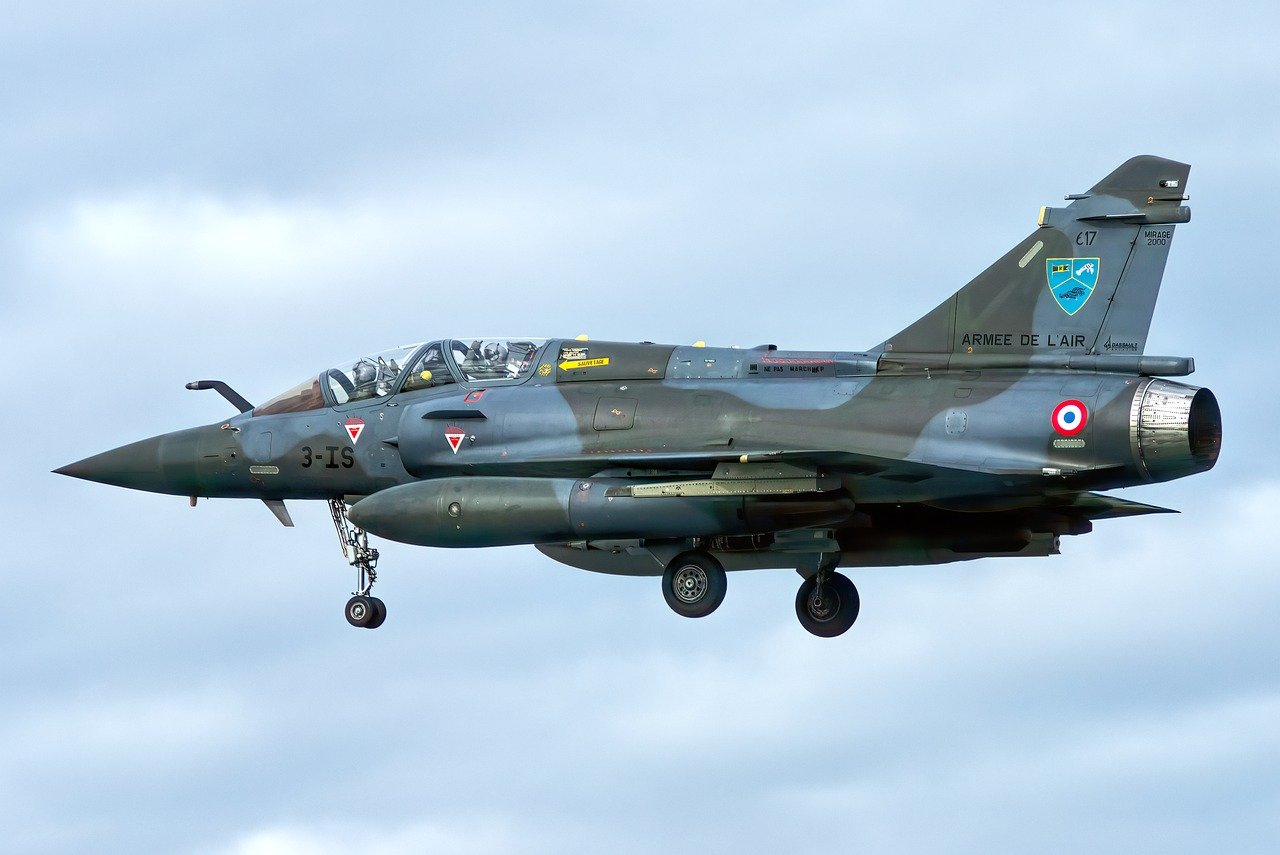
The Risks of AI in Cyber Operations
As we dive deeper into the realm of artificial intelligence in cyber operations, it’s crucial to acknowledge the potential risks that accompany these powerful technologies. While AI can enhance military capabilities, it also introduces a Pandora's box of challenges that demand our attention. Imagine a double-edged sword; on one side, we have advanced defense mechanisms, and on the other, the possibility of unintended consequences that could spiral out of control.
One of the primary concerns is the risk of escalation. In the heat of cyber warfare, AI systems can react faster than human operators, potentially leading to a situation where a minor incident escalates into a full-blown conflict. For instance, if an AI-driven defense system misinterprets a benign cyber activity as a threat, it might initiate a retaliatory response without human intervention. This could create a cycle of escalation that is hard to contain.
Moreover, the potential for misuse of AI in cyber operations is alarming. Malicious actors could leverage AI to develop sophisticated attack strategies that are capable of bypassing traditional security measures. For example, an AI program could be designed to learn from previous cyber attacks, identifying vulnerabilities in military networks and exploiting them with pinpoint accuracy. This not only puts military infrastructure at risk but could also endanger national security.
Another significant risk involves the lack of accountability. If an autonomous AI system makes a mistake—say, by launching a cyber attack on a civilian target—who is held responsible? The operator? The developer? Or does the fault lie with the AI itself? This ambiguity in accountability complicates the ethical landscape of warfare and raises pressing questions about the legality of AI actions in combat scenarios.
To address these risks, it’s essential to consider the implementation of robust governance frameworks that encompass ethical guidelines and legal standards. Such frameworks should focus on:
- Establishing clear rules of engagement for AI systems in cyber operations.
- Ensuring human oversight in critical decision-making processes.
- Developing transparent algorithms that can be audited and understood.
In conclusion, while AI holds tremendous promise for enhancing military cyber capabilities, it is imperative to navigate the associated risks carefully. By fostering an environment of accountability, oversight, and ethical considerations, we can harness the benefits of AI while mitigating its potential dangers. The road ahead requires a delicate balance between innovation and responsibility, ensuring that we are not only prepared for the future of warfare but also committed to safeguarding our values and humanity.
- What are the main risks associated with AI in cyber operations?
The main risks include escalation of conflicts, potential for misuse by malicious actors, and lack of accountability for AI actions. - How can we mitigate the risks of AI in military cyber operations?
Implementing robust governance frameworks, ensuring human oversight, and developing transparent algorithms can help mitigate these risks. - Is AI capable of making decisions without human intervention?
Yes, AI can operate autonomously, but this raises ethical and accountability concerns that need to be addressed.

Training and Simulation Enhancements
In the ever-evolving landscape of military operations, the integration of artificial intelligence (AI) into training and simulation has emerged as a game-changer. Imagine a world where military personnel can engage in realistic combat scenarios without the inherent risks of live training exercises. This is not just a dream; it's becoming a reality thanks to AI-powered tools that create immersive training environments. These advanced simulations replicate real-world conditions, allowing service members to hone their skills in a safe and controlled setting.
One of the most significant advantages of AI in training is the ability to provide adaptive learning experiences. Unlike traditional training methods that often follow a one-size-fits-all approach, AI can tailor scenarios based on the individual or team’s performance. For instance, if a unit struggles with a specific tactical maneuver, the AI can adjust the simulation to focus on that area, offering additional challenges and opportunities for improvement. This personalized approach not only enhances the learning experience but also ensures that military personnel are better prepared for the complexities of modern warfare.
Moreover, AI-driven simulations can analyze vast amounts of data during training exercises, providing real-time feedback to participants. This feedback is invaluable, as it allows military instructors to pinpoint strengths and weaknesses quickly, facilitating targeted training interventions. For example, a table summarizing the key performance metrics could look like this:
| Performance Metric | Description | AI Analysis |
|---|---|---|
| Decision-Making Speed | Time taken to make tactical decisions during simulations | Identifies areas for improvement in real-time |
| Team Coordination | Effectiveness of communication and collaboration | Highlights successful strategies and areas needing attention |
| Mission Success Rate | Percentage of successful mission completions | Assesses overall effectiveness and readiness |
By leveraging such detailed analytics, military forces can enhance operational readiness and ensure that personnel are not just trained but are battle-ready. The use of AI does not stop at performance analysis; it extends to creating realistic training environments that incorporate elements like environmental factors, enemy tactics, and even psychological stressors. This holistic approach prepares service members for the unpredictability of actual combat, making them more adaptable and resilient.
As we look to the future, the potential for AI in military training and simulation seems boundless. The technology is continuously advancing, paving the way for even more sophisticated training solutions. In this context, the question arises: how can military institutions keep pace with technological advancements while ensuring ethical considerations are met? The answer lies in a balanced approach that embraces innovation while prioritizing the well-being and effectiveness of service members.
- How does AI improve military training?
AI enhances military training by providing realistic simulations, personalized learning experiences, and real-time performance analysis, which helps prepare personnel for actual combat scenarios. - What are the benefits of adaptive learning in military training?
Adaptive learning allows training to be tailored to individual or team needs, focusing on specific areas for improvement and ensuring more effective learning outcomes. - Are there ethical concerns with AI in military training?
Yes, there are ethical considerations, particularly regarding the use of AI in combat scenarios and the potential for unintended consequences. It's crucial for military institutions to address these concerns as they adopt new technologies.

Realistic Training Environments
The landscape of military training is undergoing a remarkable transformation, thanks to the integration of artificial intelligence (AI) technologies. Imagine a training environment that is not just a static simulation but a dynamic, responsive battlefield where scenarios adapt in real-time to the actions and decisions of the trainees. This is the essence of powered by AI. These advanced simulations are designed to replicate the complexities and unpredictabilities of actual combat situations, providing service members with invaluable experience before they ever step foot on a real battlefield.
One of the most significant advantages of AI-driven training environments is their ability to create immersive experiences. Trainees can engage in scenarios that mimic the physical and psychological stresses of combat, which helps them develop critical skills such as decision-making, teamwork, and adaptability. For instance, through virtual reality (VR) and augmented reality (AR), soldiers can find themselves in a simulated urban environment where they must navigate through potential threats, assess risks, and make split-second decisions. This not only enhances their tactical skills but also prepares them mentally for the chaos of real-world operations.
Furthermore, AI can analyze the actions of trainees during these simulations, providing detailed feedback that is crucial for improvement. This feedback loop allows instructors to tailor training sessions to address specific weaknesses or enhance strengths. For example, if a group of soldiers struggles with communication under pressure, the AI can identify this trend and suggest focused training exercises to improve their collaborative skills. This level of personalization in military training is unprecedented and ensures that every service member receives the attention and resources they need to excel.
Additionally, the adaptability of AI training environments means that they can evolve over time. As military tactics and technologies change, so too can the training scenarios. This ensures that service members are always prepared for the latest challenges they may face on the battlefield. The flexibility of these AI systems allows military leaders to introduce new scenarios quickly, keeping training relevant and engaging.
Despite these benefits, there are challenges to implementing AI-driven training environments. Issues such as accessibility, cost, and the need for continuous updates must be addressed to ensure that all branches of the military can take advantage of these innovations. However, as technology continues to advance, the potential for AI to revolutionize military training remains enormous.
- How does AI enhance military training? AI enhances military training by creating realistic simulations that adapt to the actions of trainees, providing personalized feedback, and replicating the complexities of real-world combat scenarios.
- What technologies are used in AI-driven training environments? Technologies such as virtual reality (VR), augmented reality (AR), and machine learning algorithms are commonly used to develop immersive and adaptive training experiences.
- Are AI training systems cost-effective? While initial investments may be high, AI training systems can lead to long-term savings by improving training efficiency and effectiveness, ultimately reducing operational costs.

Feedback and Performance Analysis
In the ever-evolving landscape of military operations, have become crucial components in enhancing the effectiveness of training programs. With the advent of artificial intelligence, the military can now leverage data in ways that were previously unimaginable. Imagine a training session where every action taken by a soldier is meticulously recorded and analyzed. This is not science fiction; it's the reality brought forth by AI technologies. These systems can evaluate not just the outcomes of military exercises but also the processes that lead to those outcomes, providing a comprehensive view of performance.
One of the significant advantages of AI-driven feedback systems is their ability to offer real-time insights. Instead of waiting for debriefing sessions, soldiers can receive immediate feedback on their decisions and actions during training exercises. This instant feedback loop allows for quicker adjustments and improvements, fostering a culture of continuous learning. For instance, if a soldier makes a tactical error, the AI can highlight the mistake and suggest alternative strategies, allowing the soldier to learn and adapt on the spot.
Additionally, AI systems can analyze trends across multiple training sessions, identifying common areas where soldiers excel or struggle. This analysis can be presented in various formats, including
| Performance Metric | Unit A | Unit B | Unit C |
|---|---|---|---|
| Decision-Making Speed (seconds) | 5.2 | 4.8 | 6.1 |
| Accuracy (%) | 92 | 87 | 90 |
| Teamwork Rating (1-10) | 8 | 9 | 7 |
Moreover, the analysis extends beyond individual performance. AI can assess team dynamics, revealing how well units collaborate and communicate during exercises. This is vital because modern warfare often hinges on the ability of teams to work together seamlessly. By understanding these dynamics, commanders can implement strategies that enhance teamwork, ultimately leading to better operational outcomes in real-world scenarios.
In conclusion, the integration of AI in feedback and performance analysis is transforming military training. By harnessing the power of data, military organizations can not only improve individual soldier performance but also foster a more cohesive and effective fighting force. This shift towards data-driven training methodologies signifies a profound change in how military operations are prepared for the future.
- How does AI improve military training? AI enhances military training by providing real-time feedback, analyzing performance data, and identifying areas for improvement.
- What are the benefits of performance analysis in military operations? Performance analysis helps in tailoring training programs, improving teamwork, and ensuring that soldiers are well-prepared for real-world scenarios.
- Are there any risks associated with using AI in military training? While AI offers significant advantages, there are concerns about data privacy, the potential for over-reliance on technology, and ethical implications.
- Can AI replace human trainers in military training? AI is a powerful tool for enhancing training but is not intended to replace human trainers. Instead, it complements their expertise by providing valuable insights.
Frequently Asked Questions (The title must be written in English.)
- What is the role of AI in modern military operations?
AI is transforming military operations by enhancing decision-making processes, improving situational awareness, and optimizing resource allocation. This means that military strategies are becoming more data-driven, leading to greater efficiency and effectiveness in combat scenarios.
- What are autonomous weapons systems, and why are they important?
Autonomous weapons systems are technologies capable of carrying out military operations without human intervention. Their significance lies in their ability to operate in high-risk environments, potentially reducing human casualties and increasing mission precision, but they also bring up serious ethical and accountability questions.
- What challenges do autonomous systems face in military implementation?
Implementing autonomous systems in the military presents numerous challenges, including technical hurdles, ethical dilemmas, and legal considerations. These issues must be navigated carefully to ensure responsible usage in combat situations.
- How is AI used in intelligence gathering?
AI enhances intelligence gathering by enabling faster analysis of large data sets, improving threat detection capabilities, and providing predictive insights. This allows military forces to make more informed decisions based on real-time data.
- What are the implications of AI in cyber warfare?
The integration of AI in cyber warfare creates both opportunities and vulnerabilities. While it enhances offensive and defensive capabilities, it also raises concerns about potential misuse and the escalation of cyber conflicts.
- How does AI improve military training and simulations?
AI-powered training tools create realistic simulations that mimic real-world conditions, allowing military personnel to practice critical skills in a safe environment. Additionally, AI can analyze performance during these exercises, providing valuable feedback for improvement.
- What are the ethical considerations surrounding AI in military operations?
Ethical considerations include the accountability of autonomous systems, the potential for unintended consequences in combat, and the need for regulations to govern the use of these technologies. The international community is actively discussing these issues to ensure moral responsibility in warfare.


